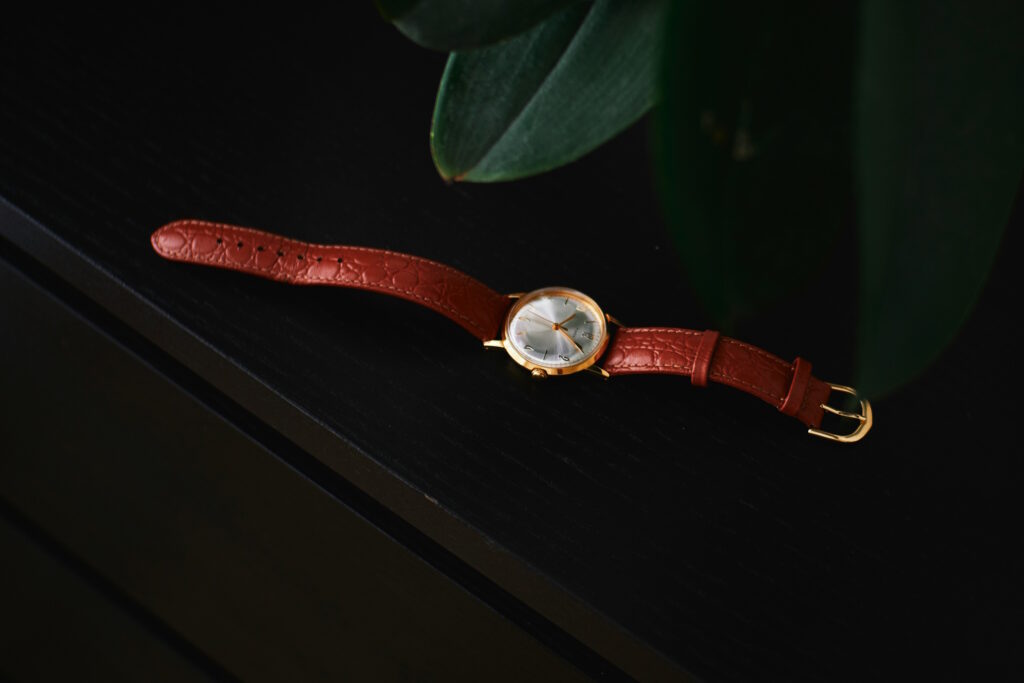There’s something special about a vintage watch that shows its age. While some people may see these marks are imperfections, others see them as stories.
So, when does patina cross the line from charm to deterioration?
What Is Patina?
Patina is the natural aging process that occurs on a watch over time. It’s a soft transformation that occurs due to light, air, and moisture exposure, and everyday wear.
It could be anything from a dial that fades from black to brown, lume that develops a yellow hue, or tiny scratches and oxidation that impacts the case.
In the world of vintage watch collecting, patina can add charm, uniqueness and even value.
That said, not everyone is a fan of patina.
Why Patina Matters to Collectors
For many watch collectors, patina is a big plus. It can turn a vintage timepiece into something truly special. Why? Because patina tells a story.
It signals originality and that a watch hasn’t been tampered with or overly restored. In many cases, an untouched watch with patina is more valuable than a watch that’s been refurbished.
In short, patina matters because it’s a visible history and is often a sign that a watch has been loved and worn.
The Case for Leaving It Be
Knowing when to leave patina untouched comes down to condition, context and character.
You should consider preserving the patina if:
- The aging looks good. A beautifully faded dial or softly toned lume can enhance a watch’s charm and appeal.
- The watch is collectible or rare. In the vintage market, originality is everything. Over-restoring a sought-after timepiece can actually reduce its value.
- There’s no functional damage. If the aging is purely cosmetic and the watch still runs well, there’s often no need to interfere.
- It tells a personal story. Family heirlooms or well-worn favourites often carry sentimental value and patina becomes a part of that memory.

The Case for Careful Restoration
You should consider restoring a patinated watch if:
- The damage affects usability. A dial that’s too faded to read, crumbling lume or a corroded crown can make a watch difficult or even unsafe to wear.
- There’s active deterioration. Moisture damage, rust or flaking paint can spread over time and harm the internal components of the watch.
- You’re planning to wear it regularly. If you want the watch to handle daily wear, restoring key components can improve its durability and reliability.
- It’s been poorly restored before. Sometimes, undoing a botched polish or reapplying lume can increase both the visual appeal and value of the timepiece.
- You prefer a refreshed look. Some owners choose restoration simply because they prefer a crisp, refined finish.
Questions to Ask Yourself Before You Decide
These key questions can help you decide whether you should restore your watch or not.
1. Does the watch have sentimental value?
Is your watch a family heirloom or a gift? If the patina is part of that story, keeping it intact might feel more meaningful than making it look new.
2. Am I keeping it, wearing it, or selling it?
- If you’re keeping your watch as part of a collection, originality may be more important.
- If you’re wearing it daily, light restoration could improve your watch’s durability.
- If you’re selling, you can find out from Martins of Glasgow whether preservation or restoration would better suit the current market.
3. Is the patina causing damage?
There’s a difference between beautiful signs of age and issues like flaking paint, corroded hands or water damage.
4. Is character or condition more important?
Some collectors love an aged look, while others prefer their watches to look sharp and clean. There’s no wrong answer, it depends on your taste and goals.
5. Will restoration affect the watch’s value or authenticity?
In some cases, even a minor restoration can significantly reduce the resale value of your watch, especially if it’s rare or has historical significance.
Final Thought: It’s Your Story Too
Patina is one of the most personal aspects of owning a vintage watch, so deciding whether to restore or preserve that story isn’t always easy.
Ultimately, it comes down to a balance between beauty and function, originality and longevity, sentiment and value.
